


Pain is the most common complaint for which patients seek advice of the physician. It is important for the physician to know the different types of pain and recognize their clinical characteristics.
Neuropathic pain is a specialized variety of pain that often gets misdiagnosed. It is important for the physician to be abreast with the etiopathogenesis of neuropathic pain and understand its clinical manifestations.
The diagnostic tests for neuropathic pain should be well understood by the physician for easy diagnosis and prompt management.
This module shall enable the physician to get a complete overview of neuropathic pain as well as some important neuropathic syndromes. This module will also give an insight to the epidemiology of neuropathic pain its pathogenesis and diagnosis. It will help the physician to recognize the early warning signs of neuropathic pain and thereby start the management early.
Neuropathic pain may significantly affect the quality of life of the patient; therefore, it is imperative that this disabling condition is dealt with efficiently and effectively.
At the end of the course, the participant is likely to understand:
Price : $175
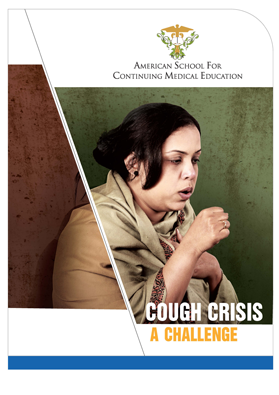
Patients with respiratory illnesses represent a dominant number in general practice. Considering the changing environmental conditions, rising pollution and stressful living conditions, the number of diseases affecting the respiratory system are on the rise. Cough is the most common complaint in patients with respiratory illnesses. It is important for a general practitioner to be abreast with the nature of this distressing symptom and provide therapeutic remedies for his patients. This module will help the physician to understand the basic symptomology of cough as well as its types. It would give a clear outline of the diagnosis and management of cough. In addition, the module would also shed light on some non-pharmacological methods of mitigating cough.
At the end of the course, the participant is likely to understand:
Price : $175

Dermatophytosis is a very common skin condition, which is often encountered by physicians in their everyday practice. Dermatophytosis is a fungal infection commonly referred to as ‘ring worm’. This condition can affect the skin, hair, and nails. It is very important for the physician to be abreast with the diagnosis and management of dermatophytosis. Physicians should be aware of the epidemiology, pathogenesis, and clinical manifestations of different types of dermatophytosis. The correct diagnosis of dermatophytosis requires clinical judgement and diagnostic experience.
This module will help the physician understand the basic aspects of dermatophytosis along with its management and preventive measures. It will give the physician an overview of all important facets of dermatophytosis that are essential in clinical practice.
This module will empower the physician with holistic knowledge of dermatophytosis thereby enabling them to tackle this disturbing condition.
At the end of the course, the participant is likely to understand:
Price : $175
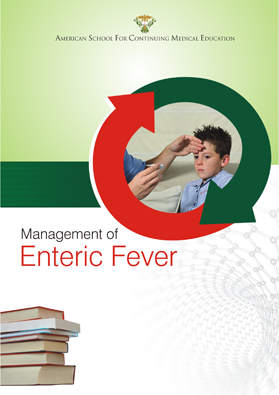
Enteric fever is a common infectious entity seen in the Indian subcontinent. It remains a common disease across the world especially in countries where access to clean water is limited. Enteric fever is the term predominantly used to describe an intestinal infection with high fever. It includes both typhoid and paratyphoid fever. General practitioners often see cases of enteric fever and therefore it is essential to be well acquainted with this condition. This module would enable the practitioner to understand the epidemiology, basic pathophysiology and clinical manifestations of enteric fever. It would also give an understanding of the diagnosis, investigations and management of enteric fever.
For managing enteric fever, rapid diagnosis and quick institution of therapy are crucial. Appropriate antibiotics must be judiciously used to combat this infection. Vaccines are available; however, they are not a part of universal immunization program. It is important that vaccines are utilized particularly for the populations living in the endemic areas or for people travelling to endemic zones. This module would also discuss the complications of enteric fever and measures to prevent this dreadful infection.
At the end of the module, the participant is likely to understand the following:
Price : $175
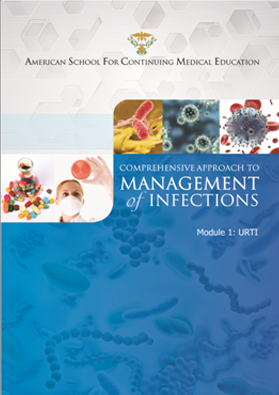
Upper respiratory tract infections (URTIs) represent the most common acute illness evaluated in an outpatient setting. These infections account for 20-40% of outpatients and 12-35% of inpatients attendance to hospitals. URTIs range from common cold, typically a mild, self-limited, catarrhal syndrome of the nasopharynx to life-threatening illnesses such as epiglottitis.
Skin and soft tissue infections (SSTIs) are clinical entities of variable presentation, etiology, and severity that involve microbial invasion of the layers of the skin and underlying soft tissues. SSTIs range from mild infections, such as pyoderma to serious life-threatening infections, such as necrotizing fasciitis. Approximately 7-10% of hospitalized patients are affected by SSTIs and these are very common in an emergency care setting.
A consultant should be aware of effective emergency measures to be taken to treat these infective situations as well as reduce further complications.
Treatment options should be considered individually based on patient age, clinical presentations, risk factors, and rate of disease progression.
In this issue, we are covering pathophysiology of URTIs and SSTIs with current treatment modalities and advantages of Lincomycin in their management. This interactive session would help in enhancing clinical skills and making the doctors aware of recent advances in the management of URTIs and SSTIs.
The above course will help the clinician to understand:
Price : $200
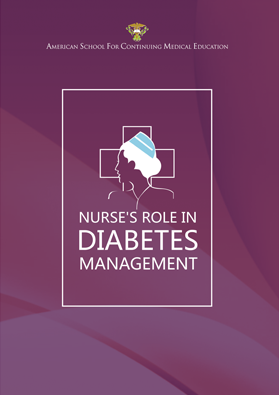
The number of diabetes patients in India are growing at an alarming rate. It is therefore important that along with the doctors, other paramedical staff as well as nurses actively participate in curbing the rising nuisance of diabetes. This programme highlights the role of nurses in diabetes management centering around two important aspects, namely, Insulin therapy and handling of diabetic emergencies.
Insulin therapy is an integral part of effective diabetes management. It is important that the nurses are well aware of the basics of insulin therapy along with its types, methods of administration, complications and newer advances.
Diabetes patients are often exposed to a number of emergency situations and therefore it is imperative that the attending nurses are adequately educated and trained in managing such situations.
This programme will also serve as a guideline for the nurses in understanding situations when diabetic emergencies are most likely to occur and thereby impart preventive counselling to diabetes patients.
This programme shall help the nurses in building confidence while managing diabetes patients in day to day working.
At the end of the programmes the participant is likely to understand:
Price : $200

Diabetes is a very commonly encountered medical condition requiring substantial care and management. It is very important that the paramedical staff is well acquainted with the condition, which would help them in managing patients. This module covers the epidemiology of diabetes, anatomy and physiology of pancreas, which is the site of metabolic disequilibrium in diabetes along with signs & symptoms of diabetes. It is also important to understand the pathogenesis of diabetes and the possible complications. This module would also cover the pharmacotherapy of diabetes and lifestyle modifications for diabetic control.
At the end of this course the participant is likely to learn:
Diabetic patients may require insulin therapy along with routine pharmacological management. The paramedical staff should be well aware of the different insulin preparations, site of injection, method of administration and possible complications arising thereof. Along with these paramedical staff should be well acquainted with ‘insulin phobia’ in diabetic patients. This module covers the different aspects of insulin therapy in diabetes.
At the end of this course the participant is likely to learn:
Price : $200
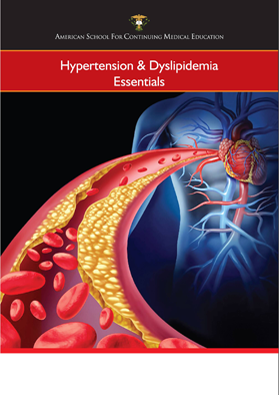
It has been observed worldwide that the prevalence of cardiovascular diseases (CVDs) and diabetes has risen exponentially. Hypertension and dyslipidemia are important risk factors associated with CVDs causing significant morbidity and mortality. Therefore, it is very important for clinicians to stay abreast with the clinical manifestations, pathogenesis and management of these conditions.
Every clinician should be well versed with the diagnosis and pharmacological therapy of hypertension and dyslipidemia. It is equally important to understand the lifestyle modifications that would benefit patients with hypertension and dyslipidemia. This course would enable clinicians to acquaint with the basic concepts of hypertension and dyslipidemia. It would also give them a contemporary understanding of managing these conditions. This course would also focus on the preventive aspects of hypertension and dyslipidemia, thereby contributing to the mitigation of CVDs.
At the end of At the end of this course, the participant is likely to understand:
Price : $200

T2DM is a heterogeneous disorder with varying prevalence among different ethnic groups and exemplified by abnormalities in carbohydrate and fat metabolism. The pathophysiology of T2DM is characterized by peripheral insulin resistance, impaired regulation of hepatic glucose production, and declining b-cell function, eventually leading to b-cell failure. A majority of individuals suffering from T2DM are obese, with central visceral adiposity. Therefore, the adipose tissue plays a crucial role in the pathogenesis of T2DM. This module explains the newer update on pathophysiology and diagnosis of T2DM.
The prevalence of diabetes is growing globally at an unprecedented rate and rapidly becoming a health concern and burden in both developed and developing countries. Early diagnosis, management and prevention of complications are the main goals of diabetes treatment. Lifestyle modifications are the cornerstone of diabetes management. A healthy diet, stress management, exercise regimen and avoidance of tobacco are all part of active diabetes management. Oral hypoglycemic agents (OHAs) act by modifying the factors aiding in the control of hyperglycemia. Since the disease has progressive nature, parallely initiating such patients on insulin therapy may be valuable. This module explains the management of T2DM, target glycemic goals and importance of aggressive glycemic control in T2DM, along with ADA 2011 diabetes management guidelines.
Despite supporting data and multiple guidelines, overall glycemic control falls far below expectations. Overall, <36% of individuals with diabetes are at recommended glycemic targets, with the most difficult-to-control cases represented by insulin-deficient individuals on insulin therapy to manage their diabetes. Clinical inertia has been defined as the lack of initiation, or intensification of therapy when clinically indicated, is most pronounced in the setting of insulin initiation. This module is an easy guide to practitioners on defining role of insulin in T2DM; when to start and target population which can definitely benefit from early insulin therapy and managing hypoglycemia due to insulin therapy.
At the end of this activity participants are likely to understand:
Price : $225

Clinical examination and diagnosis are an integral part of a clinician’s professional life. It is very important for a clinician to acquaint himself with the art and science of examination and diagnosis.
This program will enable the clinician to understand the basic examination of the systems along with various diagnostic pointers and guidelines. The first module will help the clinician to understand various signs and symptoms that the patients present with.
Investigations are an important part of diagnostic process and therefore a clinician should be abreast with the indications and contraindications of the commonly ordered tests. The subsequent modules in the program shall also comprise basics of respiratory and gastrointestinal infections.
The case studies followed by the theoretical modules will give a practical understanding of commonly seen clinical entities. The content would be reviewed by a panel of thought leaders from India. This program will give every clinician the knowledge and confidence of routine clinical practice.
At the end of the program the participant is likely to understand:
Price : $225
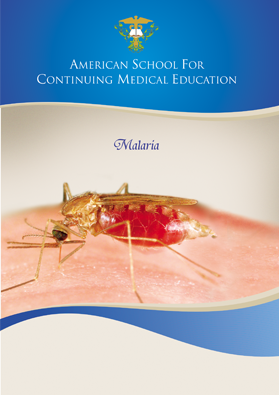
Malaria is common epidemiological occurrence in most parts of the world. It is caused by the bite of female anopheles mosquito. It can affect people with all ages and usually presents with fever, chills and rigors. This module discusses at length the epidemiological characteristics of the disease, the etiological vectors, its life cycle and pathogenesis. It also gives a brief overview about the varied clinical presentation and the different modalities available for its diagnosis.
Complications of malaria are secondary conditions, symptoms, or other disorders that are caused by malaria. Most cases of severe malaria are caused by P. falciparum infection. Rarely however, P. vivax and P. malariae infections can also cause some problems. More commonly, one comes across problems related to the use of antimalarial drugs. Malaria can also aggravate certain pre-existing illnesses and may even prove fatal for patients with end stage organ disease.
Being an important cause of morbidity and mortality needs to be addressed seriously though effective drugs are available the bugs have been a step ahead by developing resistance. This module gives the detailed overview of the management options available for treating both complicated and uncomplicated malaria. A deeper knowledge about the parasite antigen has prompted researchers to develop anti malarial vaccine; however it is still in its initial stages and may be available in future.
Upon completion of this activity, participants will be able to:
Price : $225
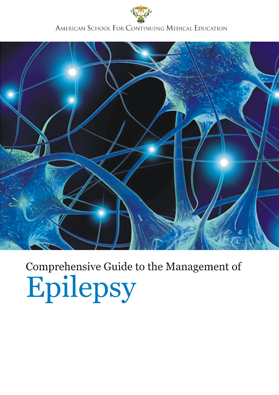
Epilepsy is a debilitating and difficult-to-treat disorder, characterized by recurrent seizures due to chronic underlying conditions. The discrimination and social stigma plagues people with epilepsy and impacts the quality of life not only of the patient but of the caregiver as well. As the role of a Physician, the care of people with epilepsy is on the rise, it is imperative to keep the medical fraternity abreast on the diagnosis, treatment and recent advances in the field of epilepsy.
This course will help equip the Physician to treat a patient with the first onset of seizure by evaluating their neurological/medical condition, establishing an accurate diagnosis of epilepsy syndrome followed by treatment using suitable medication in a manner that optimizes efficacy and assesses the relative risk of seizure recurrences. As it is known that knowledge is power, the course offers an update in recent advances, laws and management for people with epilepsy. It will be useful for the Physician in day-to-day practice to help them in improving the lives of people with epilepsy, while also updating them on latest advances in the field of epilepsy. The first module offers basic understanding of the pathophysiology, epidemiology, classification of epilepsy, risk factors and causes of epilepsy. The second module focuses on the diagnostic aspects and investigations involved in epilepsy. It offers an in-depth discussion on the pharmacological treatment options and delves into NICE guidelines. The final module deals with other surgical and non-pharmacological treatment options. It also discusses status epilepticus, disabling epilepsy, and the management of situation-related epilepsies. It will highlight the recent advances in the field of epilepsy.
This certificate course provides an in-depth knowledge on various aspects of epilepsy, and through this course, the Physician will acquire a comprehensive understanding of:
Price : $225